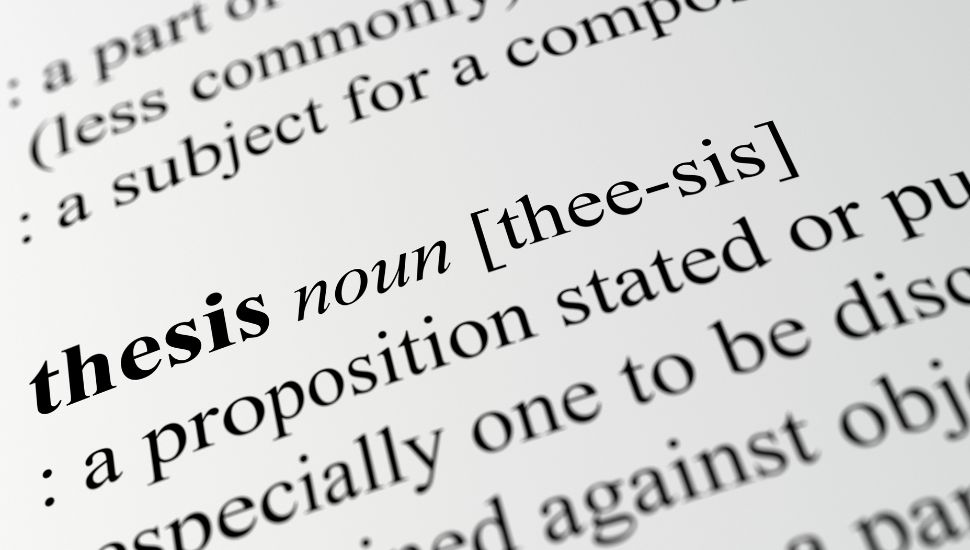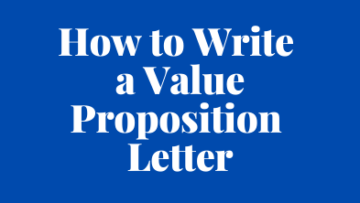Have a timed written test on an unknown topic as a job seeker?
Try thesis statement writing to organize your thoughts to write clearly.
As a job-seeking candidate, how do you prepare for a timed written test on an unknown topic where you need to provide a proposal on why you support it?
A former client looking to participate in the Great Reshuffle asked me this question, and I gave some advice.
As a former K-12 educator, one of my nine Pennsylvania Department of Education certifications is 9-12 English. I have been blessed with experiences teaching students ages 4 in pre-school lab to grade 12 and everything in between.
Depending on your school district, you might have learned about thesis statement writing in middle school, high school, or college.
Believe it or not, I have taught thesis statement writing to my first and second-grade gifted and talented students and other elementary, middle, and high school students.
Why? It’s easy to write once you have created an outline to follow. Do your brainstorming with your reasoning, and then write sentences, which will turn into paragraphs. You will have a beginning, a middle, and an end.
If you don’t know or recall where to begin, I’ll guide you below, but first want to review some basic writing concepts to consider as a refresher.
WRITING CONVENTIONS
I used a rubric as a K-12 teacher to score student writing. As an adult, you still need to consider these areas of your writing: Focus, Content, Organization, Style, and Conventions. Review the categories in the rubric on how to score a “4.”
OXFORD COMMAS
Know what an Oxford (or serial) comma is vs. AP style. As an academic writer who uses the APA style, I will always use Oxford commas. However, I know you AP (Associated Press) people out there! LOL!
I know AP folks don’t use that second comma before the word “and.” Please understand this drives me crazy! It is one of my pet peeves. Whatever style you choose, BE CONSISTENT!
Also, remember that commas can save lives. I love the classic “Let’s eat grandma” vs. “Let’s eat, grandma.” That’s a different kind of comma, but commas are essential.
PARALLEL STRUCTURE
Understand parallel structure. Parallel structure is when you join several similar or related ideas in a sentence and use the same grammatical form to express them. For example, you pair a noun with a noun, a phrase with a phrase, and a clause with a clause.
NOT PARALLEL – A good friend is loyal, sensitive and showing consideration. [two adjectives and a phrase]
PARALLEL – A good friend is loyal, sensitive, and considerate. [three adjectives]
ORGANIZE YOUR THOUGHTS
Make a chart that includes the Who, What, Where, When, Why, and How and the Five Senses and Feelings. Maybe you can weave those in for impact. Do your thinking in a quick outline, so you have a structure, and then start writing.
Watch how many sentences start with the word “I.” Make it interesting for the reader by changing up the beginning of each sentence.
THESIS STATEMENT WRITING
Thesis statement writing has three parts. The first part is the topic and the subject of the essay. The second part is the position, or the main idea is the opinion or explanation about the topic. The position includes the reasons that justify the particular position the writer takes. The reasons are written in parallel structure as explained above.
The thesis statement is a very specific statement that appears at the end of the essay’s first paragraph and will give the readers a clear idea of what is to come. This sentence is worded to function as the essay’s main idea.
Although carefully worded, it is also general enough to allow for the development of thoughts over the paragraphs of the essay and sets the mood for the paper. The thesis statement prepares the reader for facts and details that the writer will provide as evidence for the writer’s thesis to establish the position the writer is taking and the specific focus of the paper.
TIPS FOR WRITING A THESIS STATEMENT
- Develop your thesis statement from the information you’ve gathered.
- Check your thesis for a limited topic and your main idea about it.
- Be clear and specific.
- Use your thesis statement as you outline, draft, and revise.
- Always consider your first writing a draft that you will revise and edit. (unless you are in a timed writing test and there may not be time).
EXAMPLES OF THESIS STATEMENTS
Weak example – World hunger has many causes and effects. [“World hunger” can’t be thoroughly discussed in a brief essay. “Many causes and effects” is too vague and is not specific.]
Strong example – Hunger persists in Appalachia because there is a great deal of poverty, jobs are scarce, and farming in infertile soil is rarely profitable. [This is a strong example because it narrows the subject to a more specific and manageable topic with specific causes identified for the existence of hunger.]
WHY A THESIS STATEMENT?
A thesis statement allows you to test your ideas by putting them into a sentence or two. It helps you better organize your writing, develop your position, and provide the reader with a “guide” to it.
A SIMPLIFIED EXAMPLE TO REFERENCE
The sample below is a middle school example of five paragraphs, so if they can do it, so can you as an adult! Paragraph A has the thesis statement of three things in the last sentence. Paragraph B embellishes reason one, C reason two, and D reason three. Paragraph E reiterates the thesis and sums it up. The thesis is bolded in paragraphs A and E below.
Here I am at the forty-yard line, first down and ten! Next play, the ball comes right to me, and I run sixty yards. Touchdown! As an NFL star, I realize that this game became my life at an early age. Football is a great sport because it is fun, is good exercise, and encourages teamwork.
Football games are fun because you can hang out with your friends and family. The excitement during the games makes the crowd cheer, yell, and scream together. At the halftime show, the fans cheer on the marching band and color guard. Cheerleaders also make the game enjoyable with all their energy and spirit. In addition, having snacks at the football game makes the experience pleasurable.
Playing football is good exercise. During practice, the team performs stretches, leg lifts, up-downs, and sprints up the stairs and hills. There’s a lot of movement and action in the game. Players on the team run, jump, bump, and tackle each other, so they must be physically fit. When the team members run fast, you know they’re getting good exercise when they break a sweat.
The players bond with their team chant in the huddle with the coach. The coach also cheers everyone on during the plays. Sports broadcasters call plays so the crowd can hear whether or not there is a collaboration or if someone gets a penalty. Whether there is a win or loss, the team experiences joy or sorrow together. My family has always encouraged me to play football because of the teamwork.
I wish football was a year-round sport because it is fun, is good exercise, and encourages teamwork. In 2006, I began playing football in the 7th grade for the ABC Middle School Tigers as a middle school student. Continuing through high school, I won a scholarship to Florida State University and played there for four years. The NFL draft discovered my talents, and now I am with the Philadelphia Eagles. It’s nice to be in Pennsylvania, so I can come back home to visit my family, who encouraged me to be a football player.
ORGANIZE FOR SUCCESS
Hopefully, this example will help you when faced with a timed writing sample where you have to justify your position.
When interviewing, you can also use the thesis statement idea when asked, “Tell me about yourself.” Make sure those three items match what the company is looking for in the job description.
NEXT STEPS
- Subscribe to my newsletter on LinkedIn for bright ideas to manage your career.
- Join as a member at https://greatcareers.org/membership of the #1 business networking association on the Philadelphia Business Journal’s Book of Lists two years in a row!
- Register on the events page for our upcoming online events.
- If you need a resume or LinkedIn profile to get you to your next step, book a call to chat!
- Follow #GreatCareersPHL
AUTHOR BIO
Lynne M. Williams is the Executive Director of the Great Careers Groups, a volunteer-run 501(c)3 nonprofit organization that provides career education and networking connections for 1) job seekers in career transition, including veterans, and 2) employed and self-employed for career management. She is also the President of ChemPharma.net and runs a Clubhouse session every Friday at 11 AM ET in the Thought Leadership Branding Club.
Aside from writing keyword-focused content for ATS resumes and LinkedIn profiles, Lynne is currently writing her doctoral dissertation on LinkedIn for Job Seekers. She is a contributing author on “Applying to Positions” in Find Your Fit: A Practical Guide to Landing the Job You Love along with the late Dick Bolles, the author of What Color is Your Parachute?, and is also a speaker on career topics.
This article is also published on: vista.today, montco.today, delco.today, bucksco.today, and in the author’s LinkedIn newsletter. A list of articles can also be found in a Google doc.



